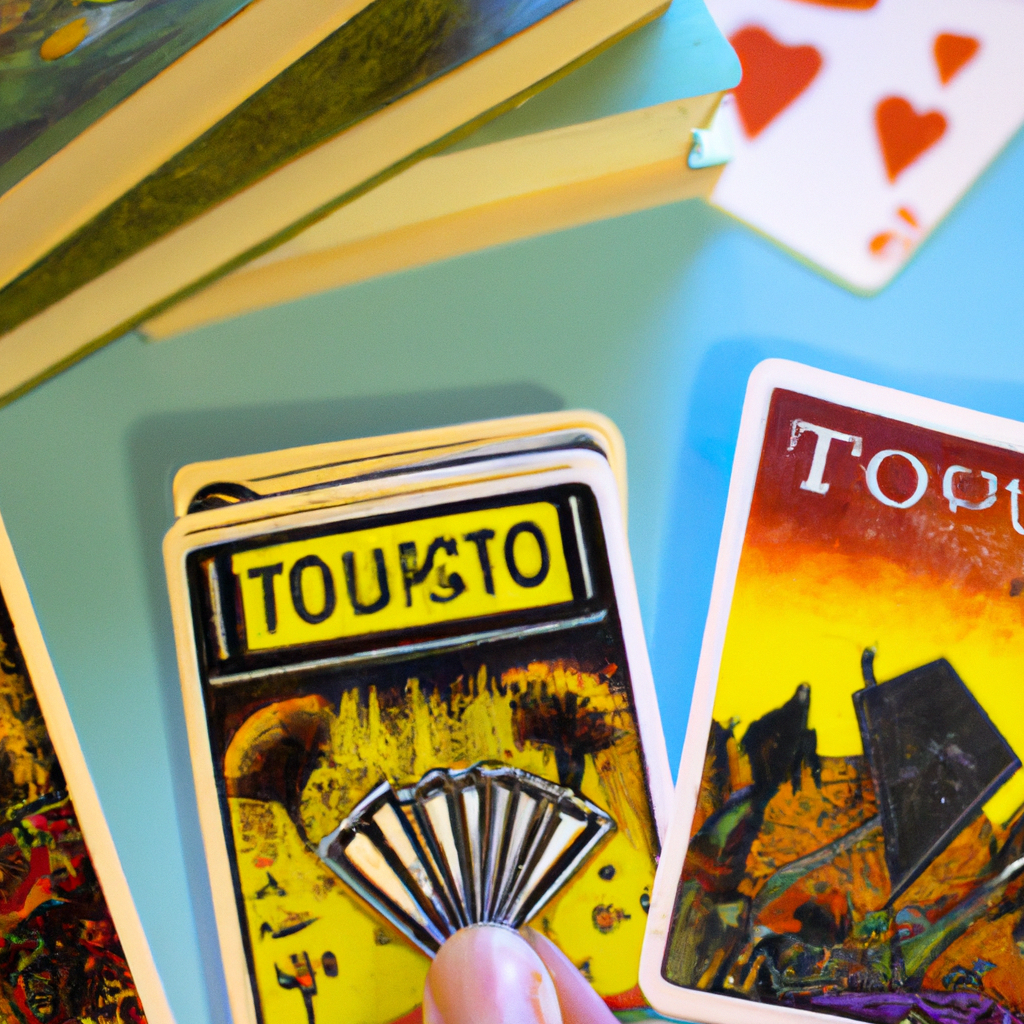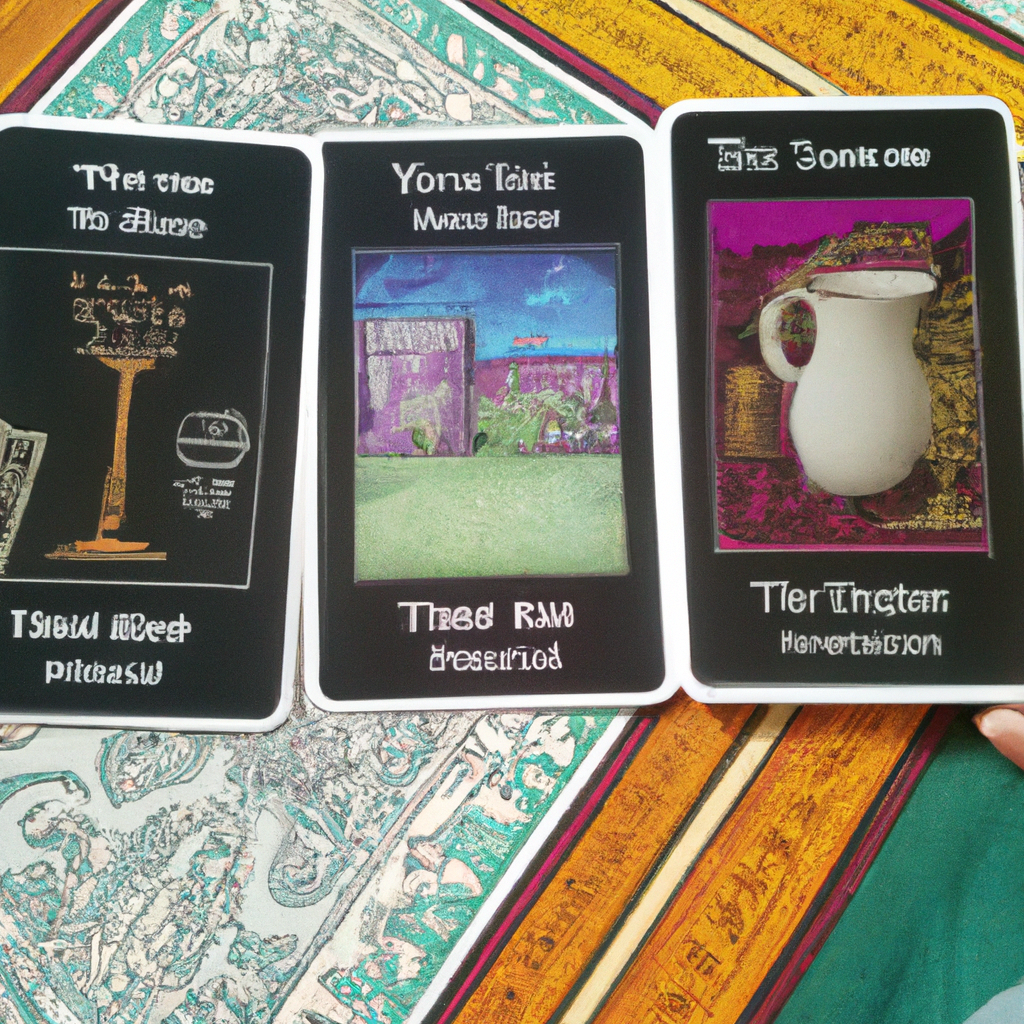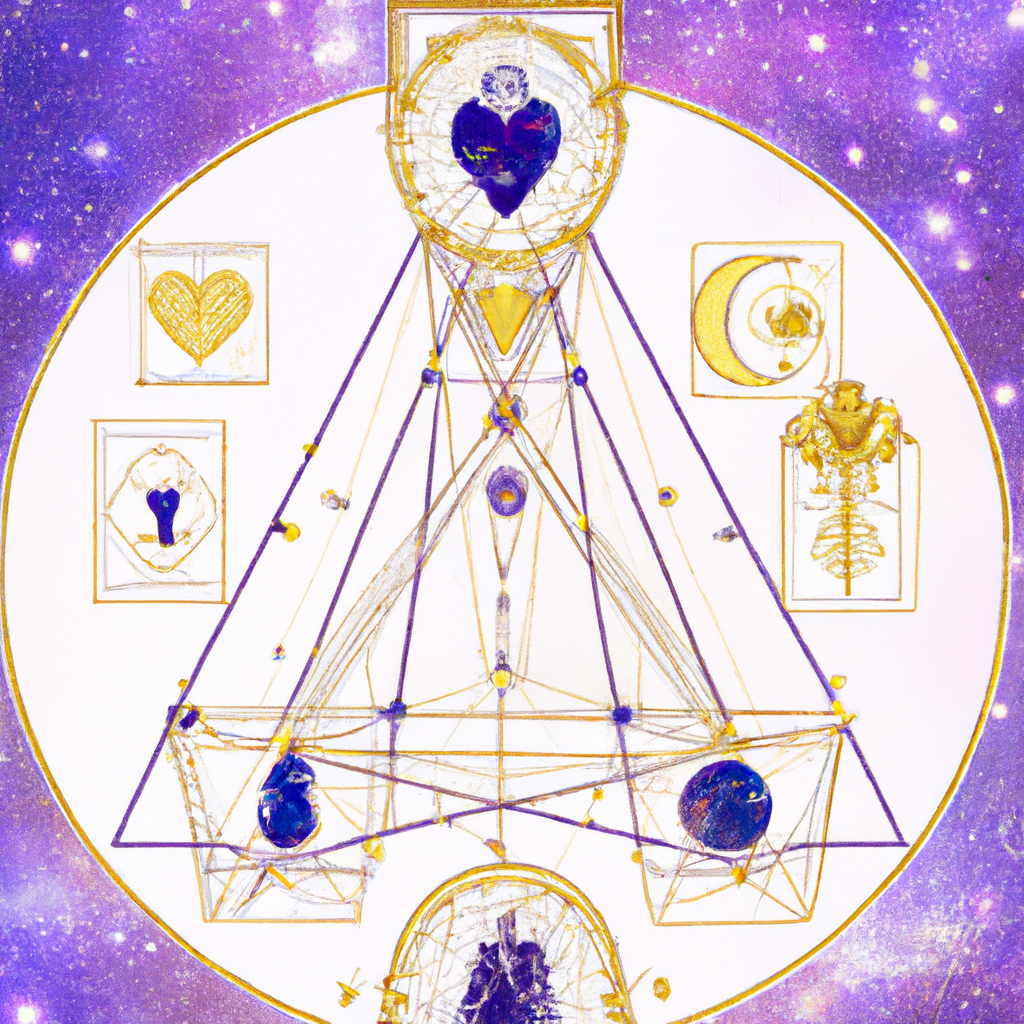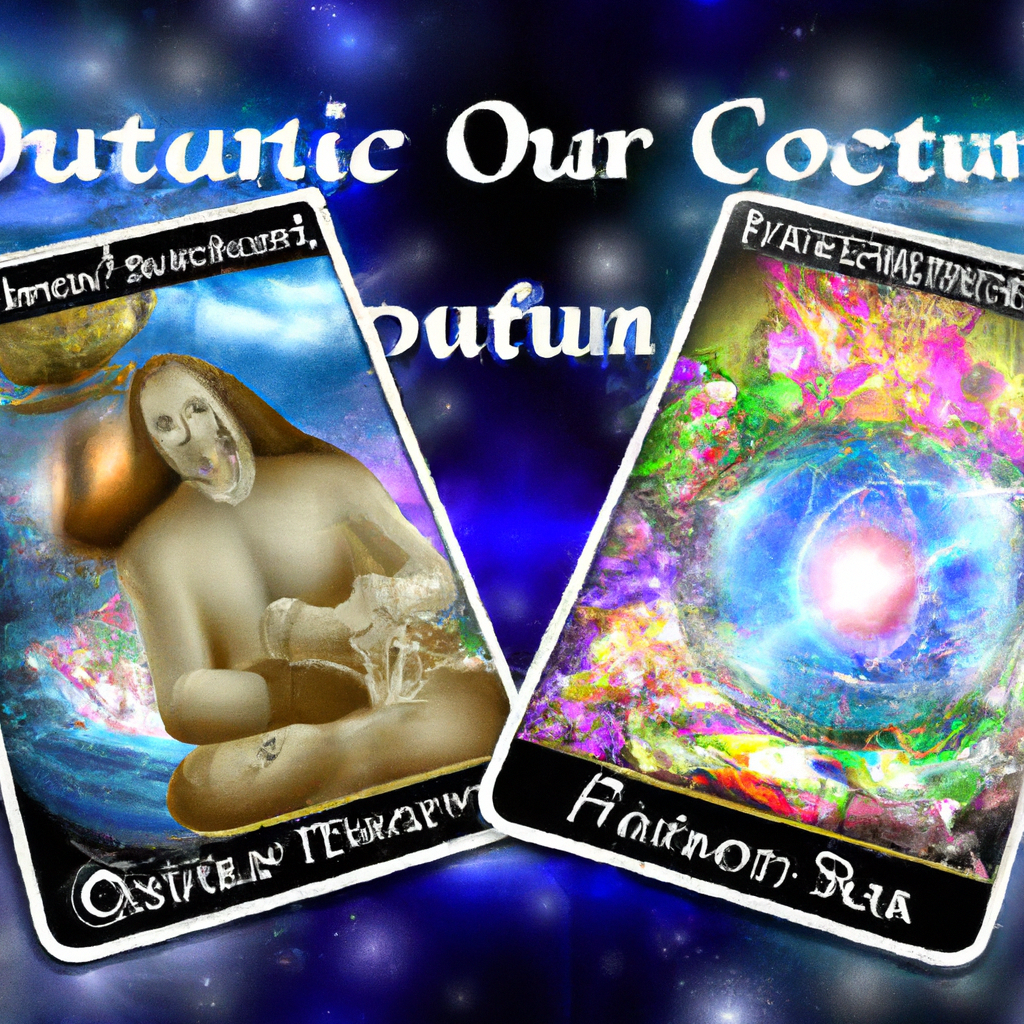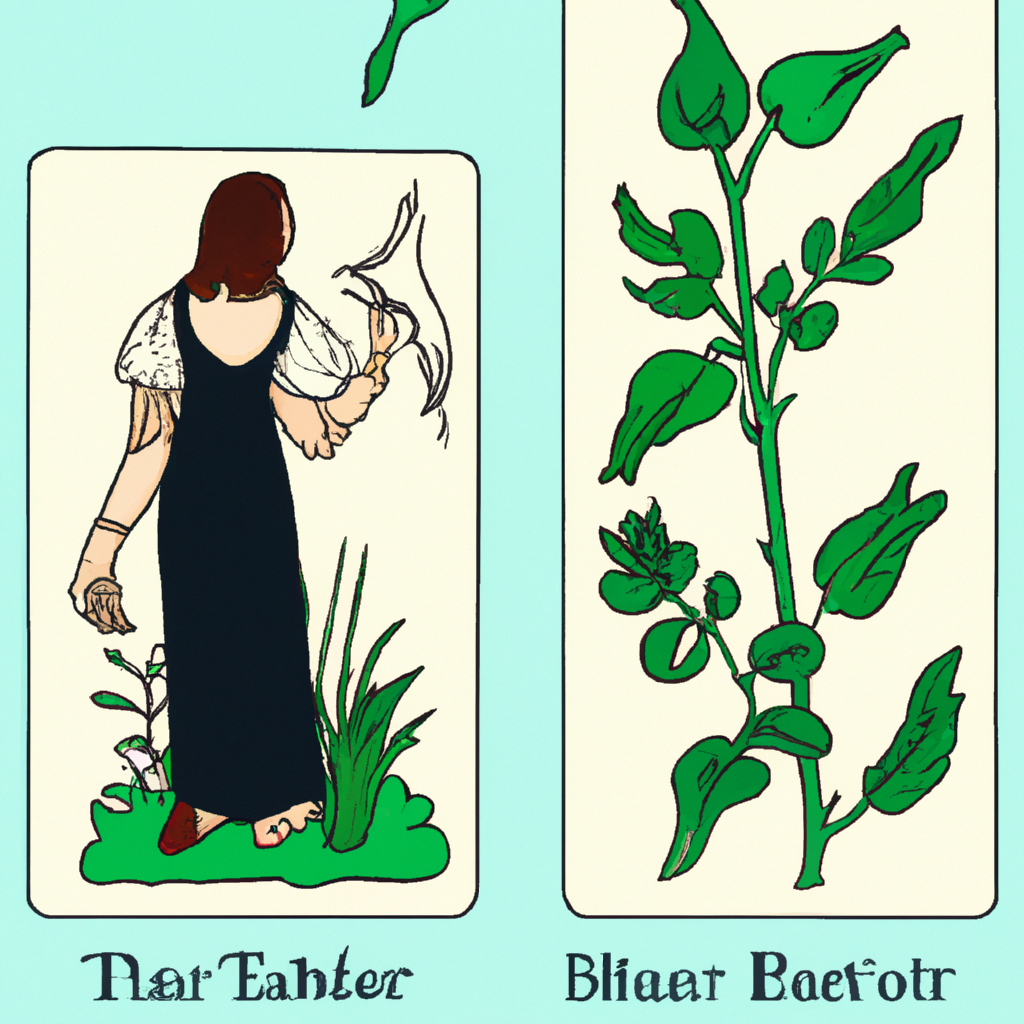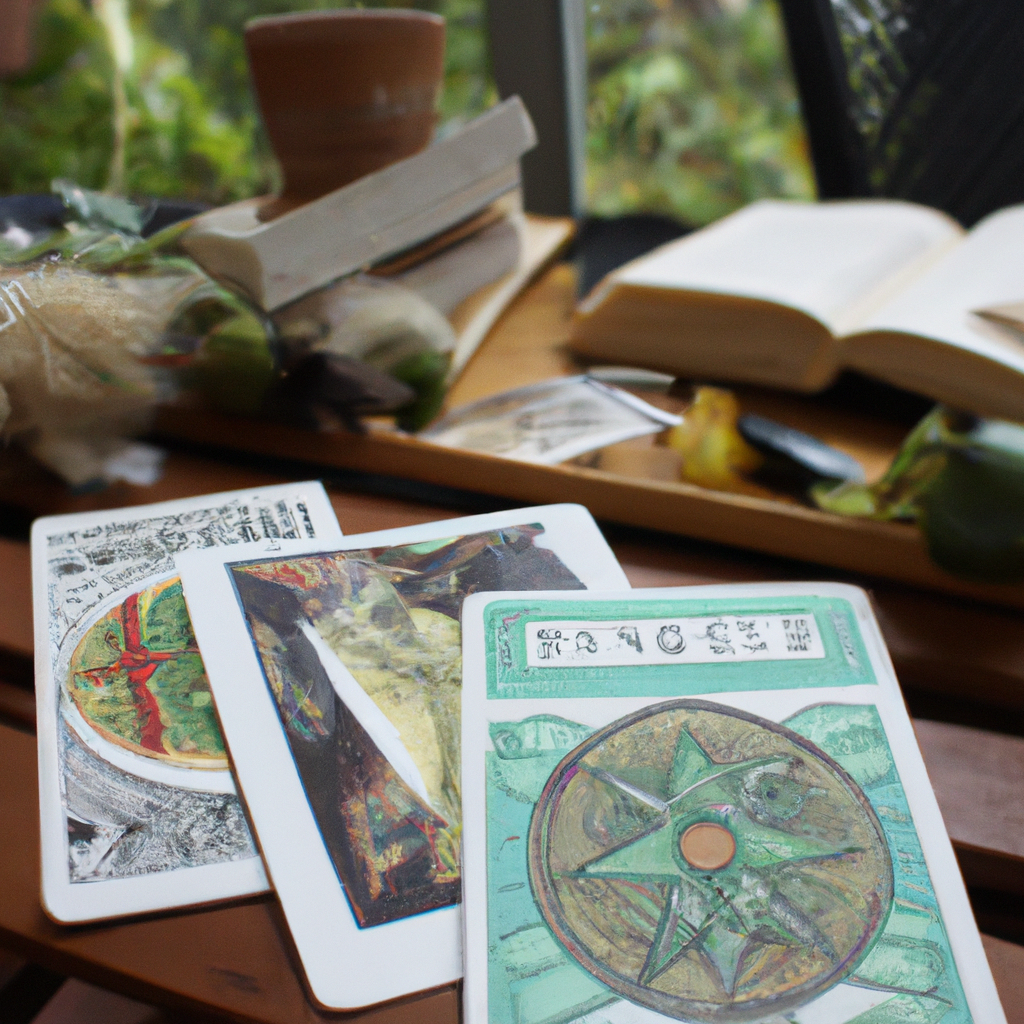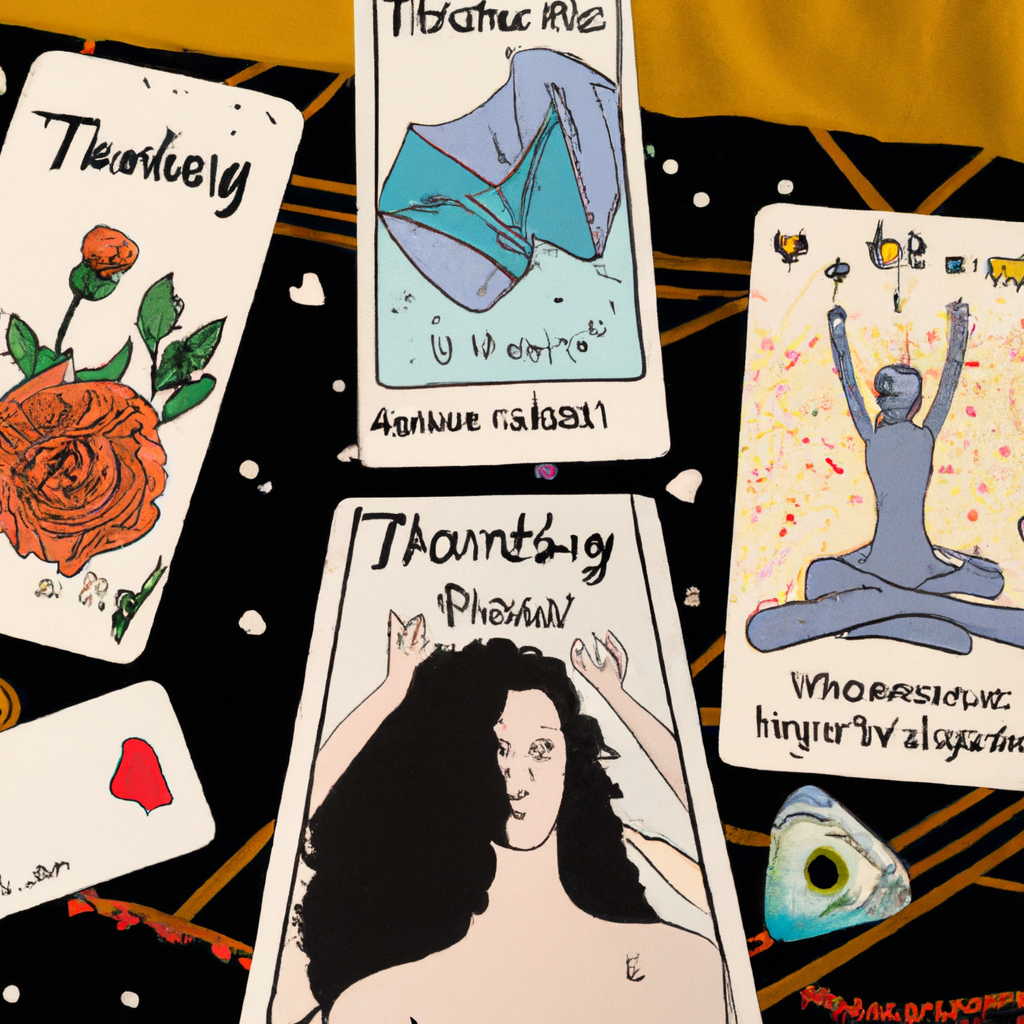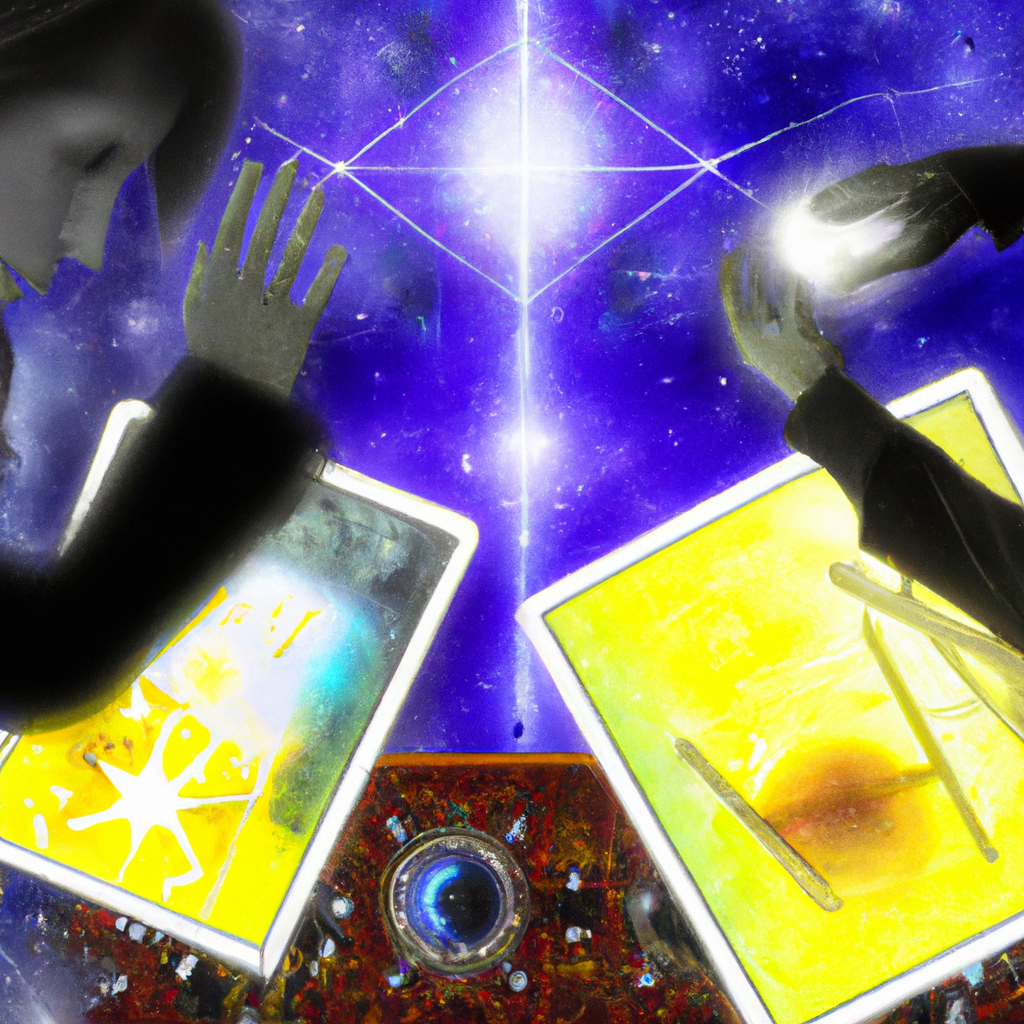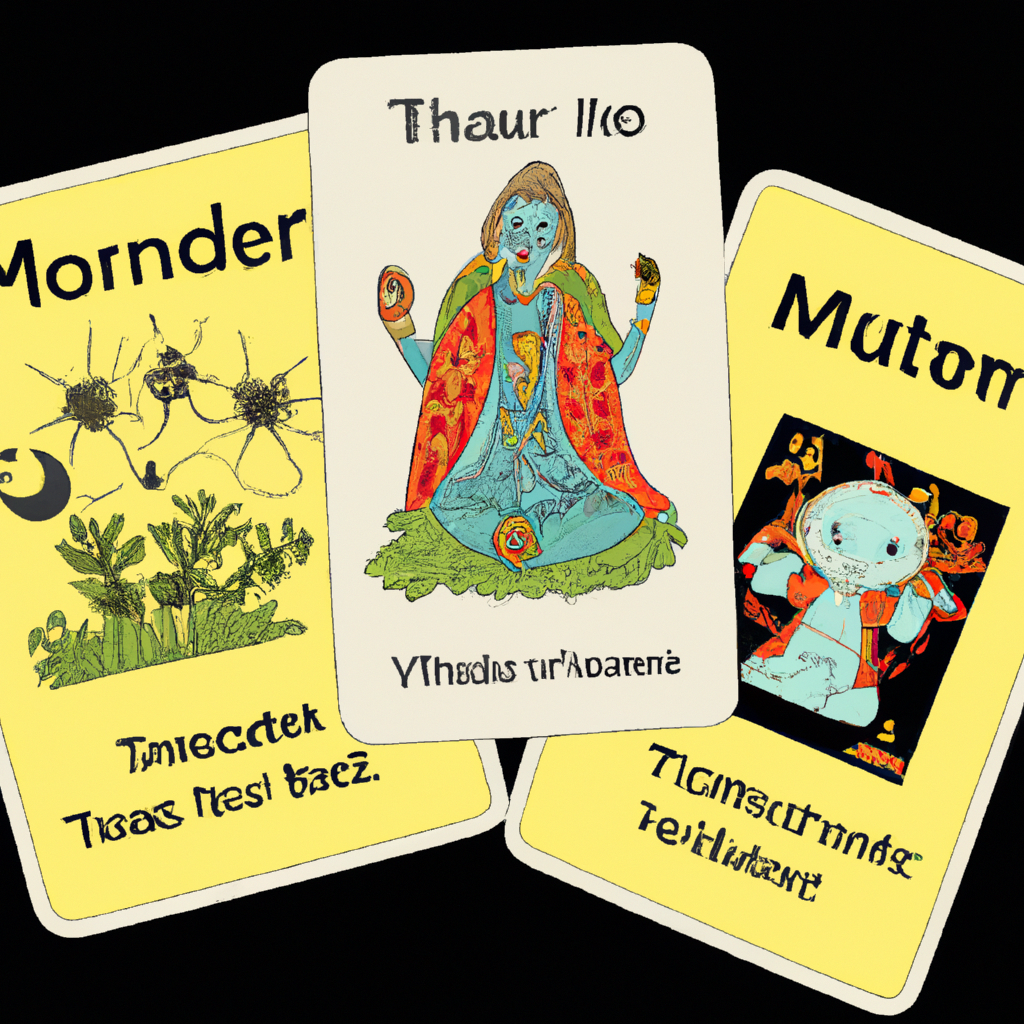Shopping Cart.
No products in the cart.
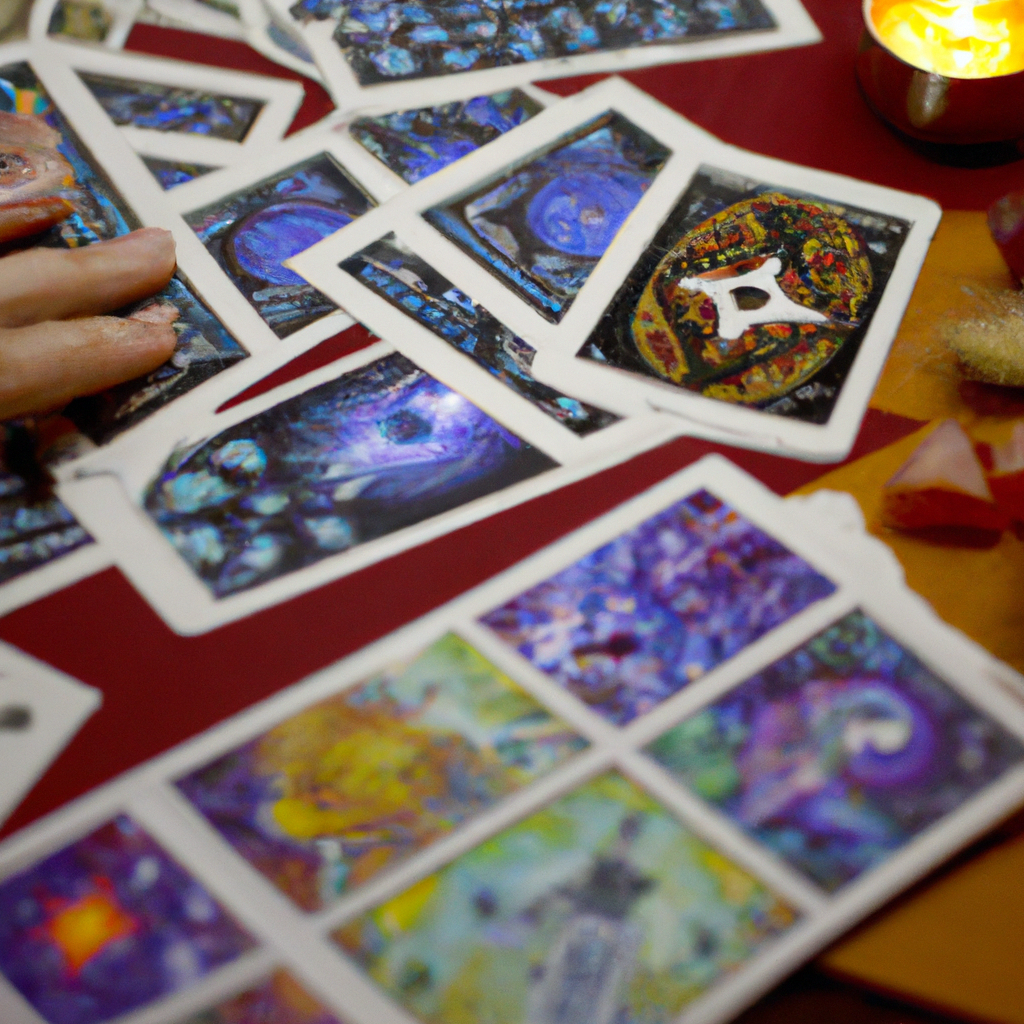
Tarot and geomancy, two ancient divination techniques, have been used for centuries to provide guidance, insight, and a deeper understanding of life’s mysteries. Both methods are earth-based, drawing on the natural world’s energies and rhythms to offer wisdom and perspective. But what exactly is the connection between these two practices? Let’s delve into the fascinating world of tarot and geomancy to find out.
Picture this: you’re sitting in a cozy room, the air heavy with the scent of burning sage. Before you, a tarot reader shuffles a deck of beautifully illustrated cards, each one rich with symbolism and meaning. As the reader lays out the cards, a story begins to unfold, a narrative woven from the archetypal images on the cards. This is the magic of tarot, a divination practice that uses a deck of 78 cards to provide insight into the past, present, and future.
Now, imagine you’re standing in a quiet field, the earth beneath your feet. In your hand, you hold a handful of stones, each one carefully chosen for its size and shape. You cast the stones onto the ground, and their pattern forms a unique geomantic figure. This is the essence of geomancy, an earth-based divination technique that interprets the patterns formed by tossed stones or other small objects.
At first glance, tarot and geomancy may seem quite different. Tarot relies on a deck of cards, while geomancy uses the natural world directly. However, both practices share a common thread: they are both rooted in the belief that the universe is interconnected, and that we can tap into this interconnectedness to gain insight and guidance.
In both tarot and geomancy, the practitioner acts as a conduit, channeling the universe’s wisdom through the cards or stones. The tarot reader interprets the cards’ symbolism, while the geomancer reads the patterns formed by the stones. Both practices require a deep understanding of symbolism and a strong intuition.
Moreover, both tarot and geomancy are grounded in the elements of earth, air, fire, and water. In tarot, these elements are represented by the suits of the minor arcana: pentacles (earth), swords (air), wands (fire), and cups (water). In geomancy, the elements are represented by the four binary elements of each geomantic figure.
But perhaps the most profound connection between tarot and geomancy lies in their shared purpose. Both practices are tools for self-discovery and personal growth. They offer a mirror in which we can see ourselves more clearly, revealing hidden truths and offering guidance for our journey.
Whether you’re seeking answers to specific questions or simply looking for a deeper understanding of yourself and the world around you, tarot and geomancy can provide valuable insights. They invite us to slow down, tune in, and listen to the wisdom of the universe. And in doing so, they remind us of our connection to the natural world and the powerful energies that flow through it.
So, next time you find yourself seeking guidance or clarity, why not explore the ancient practices of tarot and geomancy? You might be surprised by the wisdom and insight they can offer. After all, as the saying goes, “As above, so below. As within, so without.” And who knows? You might just find that the answers you seek are already within you, waiting to be discovered.
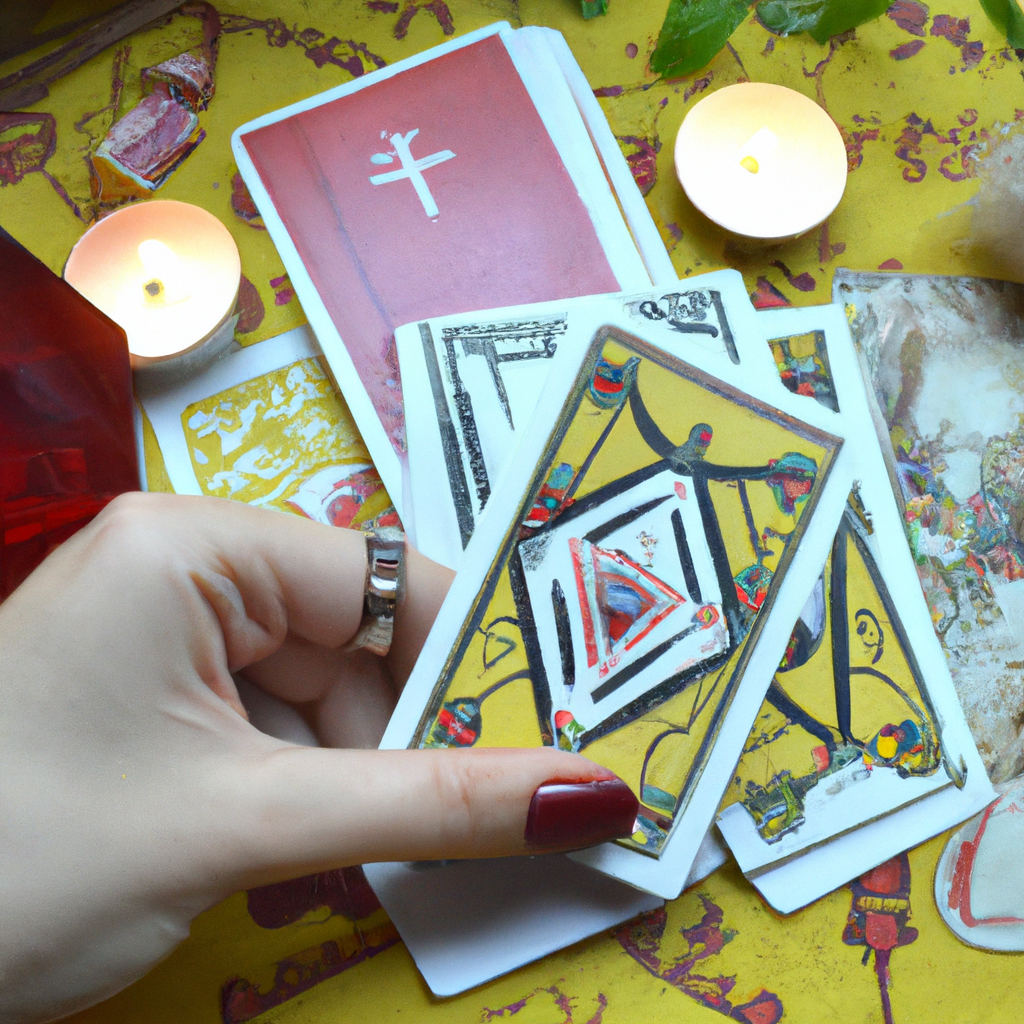
Tarot and Geomancy are two ancient divination techniques that have been used for centuries to provide guidance, insight, and understanding. Both of these practices are deeply rooted in the natural world, drawing upon the power and wisdom of the Earth to reveal hidden truths. As we delve into the fascinating world of Tarot and Geomancy, we’ll discover how the Earth elements play a crucial role in these divination techniques.
Picture this: you’re sitting in a quiet room, a deck of Tarot cards spread out before you. As you shuffle the cards, you can’t help but notice the rich, earthy imagery that adorns each one. The Pentacles suit, for instance, is directly associated with the Earth element. It represents material wealth, physical aspects of life, and the practical matters that ground us. When a Pentacles card appears in a reading, it’s a reminder of our connection to the Earth and the tangible realities of our existence.
Now, let’s shift our focus to Geomancy, a divination technique that literally means “divining the Earth.” In Geomancy, the diviner creates sixteen lines of dots in the sand or on paper, then reduces them to a series of single and double points. These points are then interpreted using a set of traditional meanings. It’s a process that’s deeply connected to the Earth, both in its name and its practice. The act of creating the lines in the sand or on paper is a physical, tactile experience, reminding us of our connection to the natural world.
But the role of Earth in Geomancy goes beyond the physical act of creating the lines. The Earth element is also represented in the Geomantic figures themselves. Each figure is associated with one of the four classical elements: Earth, Air, Fire, and Water. The Earth figures – Populus, Tristitia, Albus, and Caput Draconis – are particularly significant. They represent stability, practicality, and the grounding energy of the Earth.
So, why does the Earth element play such a significant role in Tarot and Geomancy? Well, it’s all about balance. In both practices, the Earth element serves as a counterbalance to the more ethereal elements of Air, Fire, and Water. It reminds us to stay grounded, to pay attention to the physical world around us, and to value the tangible aspects of our lives.
But there’s more to it than that. The Earth element also symbolizes growth, abundance, and fertility. In Tarot, the Pentacles suit is often associated with financial success and material abundance. In Geomancy, the Earth figures can indicate growth, prosperity, and the fruition of plans. They remind us that, just like a seed planted in the Earth, our actions and decisions can lead to growth and abundance in our lives.
In conclusion, the Earth element plays a vital role in both Tarot and Geomancy. It grounds us, reminding us of our connection to the natural world. It symbolizes stability, practicality, and the tangible realities of our existence. And it represents growth, abundance, and the potential for prosperity. So, the next time you draw a Pentacles card or create a Geomantic figure, take a moment to appreciate the wisdom and power of the Earth. After all, it’s not just our home – it’s also a source of guidance, insight, and understanding.
Tarot and geomancy, two ancient forms of divination, have been used for centuries to provide guidance, insight, and a deeper understanding of life’s mysteries. These earth-based divination techniques, while distinct in their methods, share a common thread in their connection to the natural world and the wisdom it holds.
Imagine a quiet room, lit only by the soft glow of candles. A deck of tarot cards is spread out on a table, each card rich with symbolism and meaning. The reader, with a calm and focused mind, selects a card, turning it over to reveal its message. This is the world of tarot, a form of divination that uses a deck of 78 cards, each with its unique imagery and symbolism. The cards are divided into the Major Arcana, representing life’s spiritual and karmic lessons, and the Minor Arcana, reflecting everyday trials and tribulations. The beauty of tarot lies in its ability to tap into the subconscious mind, revealing hidden truths and offering guidance.
Now, picture a different scene. A geomancer, surrounded by the elements of nature, draws patterns in the sand. These patterns, known as geomantic figures, are interpreted based on their shapes and the elements they represent. Geomancy, derived from the Greek words ‘geo’ meaning earth and ‘manteia’ meaning divination, is an ancient form of divination that interprets markings on the ground or patterns formed by tossed handfuls of soil, rocks, or sand. The earth, in its infinite wisdom, provides answers to the geomancer’s questions.
While tarot and geomancy may seem worlds apart, they intersect in fascinating ways. Both are earth-based divination techniques, deeply rooted in the natural world. They draw upon the energies of the earth, using its symbols and elements to provide guidance and insight. Both forms of divination also require a deep connection with the self and the universe, a sense of intuition, and an open mind.
The intersection of tarot and geomancy is not just in their shared connection to the earth, but also in their shared purpose. Both are tools for self-discovery, offering a mirror to the soul and a map to navigate life’s journey. They provide a language to communicate with the universe, to ask questions and seek answers. Whether it’s through the symbolic imagery of tarot cards or the earthy patterns of geomancy, these divination techniques offer a way to tap into the wisdom of the universe and the knowledge within ourselves.
Moreover, both tarot and geomancy encourage introspection and self-reflection. They invite us to look within, to understand our desires, fears, and motivations. They challenge us to confront our shadows, to embrace our light, and to grow and evolve. They remind us that we are part of a larger universe, connected to the earth and to each other.
In conclusion, tarot and geomancy, while unique in their methods, share a profound connection to the earth and its wisdom. They offer a bridge between the physical and spiritual realms, providing guidance, insight, and a deeper understanding of ourselves and the world around us. So, whether you’re drawn to the symbolic imagery of tarot or the earthy patterns of geomancy, these ancient divination techniques offer a rich and rewarding journey of self-discovery and spiritual growth.
Tarot and Geomancy are both ancient divination techniques that have been used for centuries to gain insight into various aspects of life. Tarot uses a deck of cards with symbolic images to interpret the past, present, and future, while Geomancy is an earth-based technique that involves interpreting patterns formed by soil, rocks, or sand. Both methods require a deep understanding of symbolism and intuition. Despite their differences, both Tarot and Geomancy serve as tools for introspection and self-understanding, providing guidance and clarity to those who use them.
